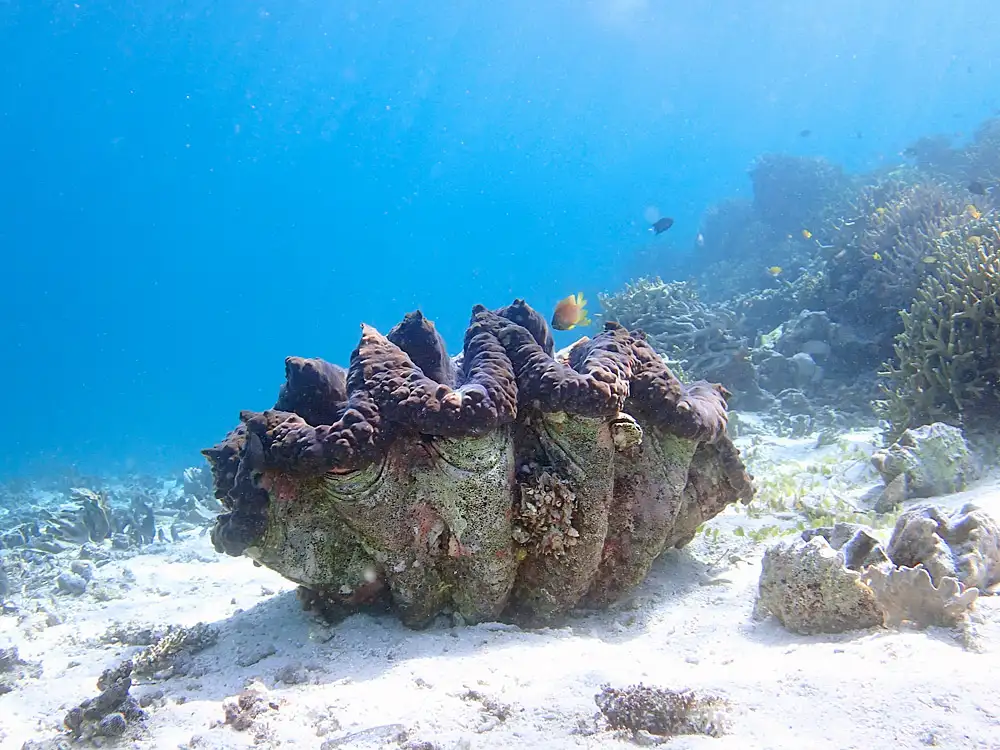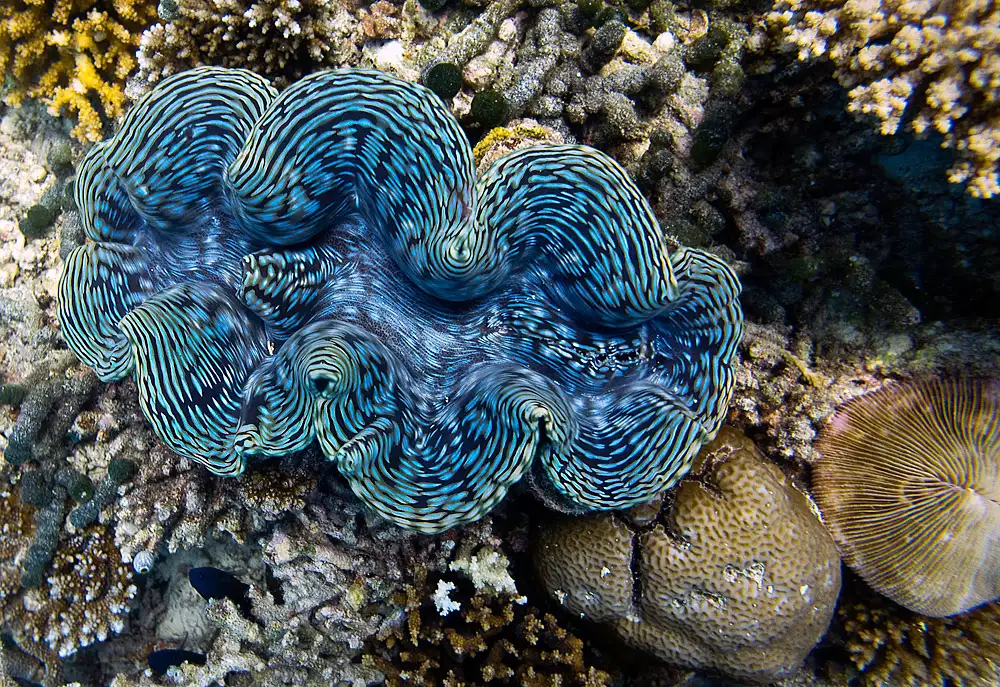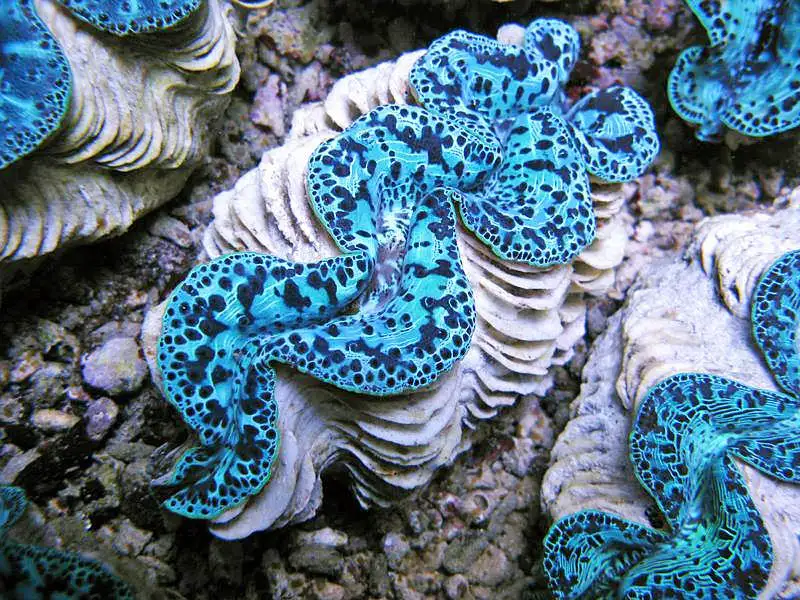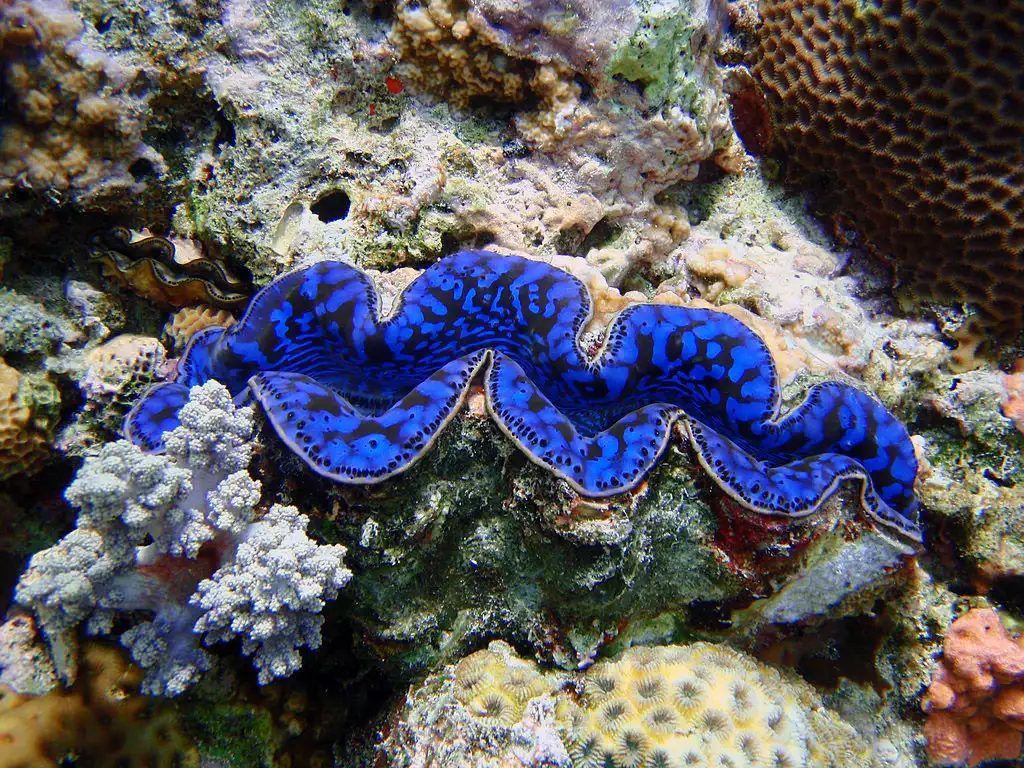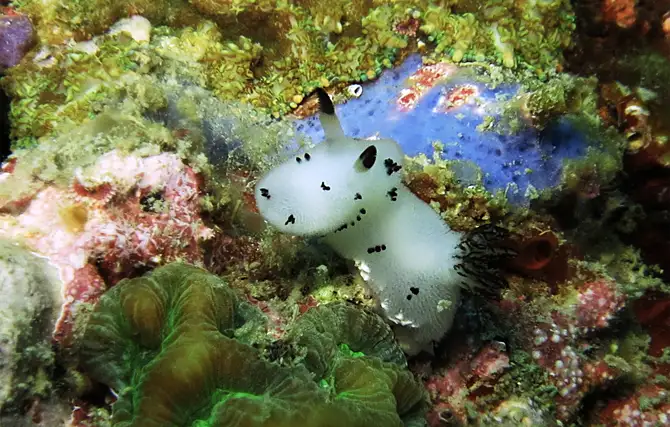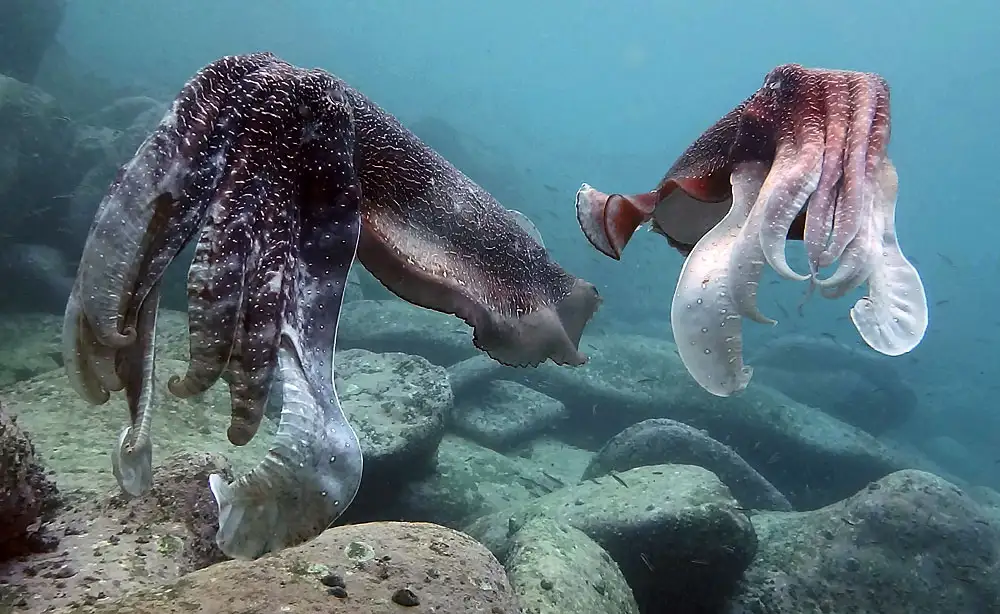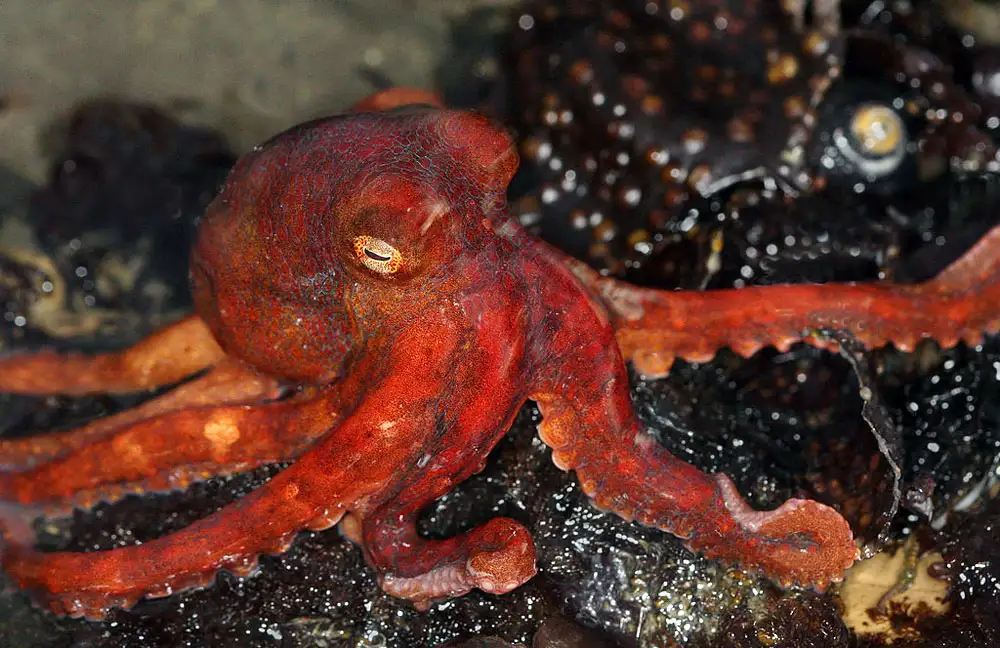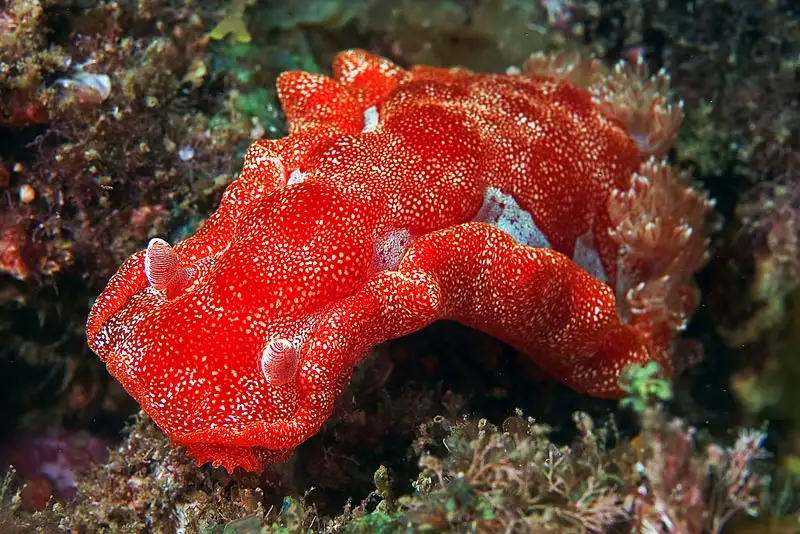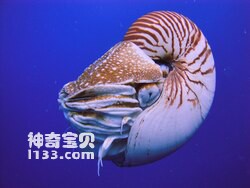Giant Clam
IUCN
VUBasic Information
Scientific classification
- name:Giant Clam
- Scientific Name:Tridacna gigas
- Outline:Mollusca
- Family:Tridacnidae Tridacna
Vital signs
- length:Shell length 60–100 cm; max ~120 cm
- Weight:Up to/exceeding 200 kg (including shell)
- lifetime:Can exceed 100 years
Feature
Photosymbiosis + filter‑feeding; byssal juveniles; semi‑embedded adults; mass broadcast spawning; very large size.
Distribution and Habitat
Tropical Indo‑Pacific shallow reefs and lagoons (1–20 m).
Appearance
Huge heavy shell with coarse folds; vivid blue/green/brown mantle; strong hinge/adductor.
Details
Tridacna gigas—the giant clam—is a flagship bivalve of family Tridacnidae. Its mantle hosts zooxanthellae for photosynthesis while the animal also filter‑feeds, making it a reef engineer.
Ecology & Biology
Photosymbiosis: iridocytes and symbiotic algae optimise light capture; suspension feeding supplements energy and nutrients.
Attachment & growth: juveniles use a byssus; adults become semi‑embedded; growth is slow.
Reproduction: sequential hermaphrodite, engages in mass broadcast spawning; larvae planktonic then settle.
Identification
Enormous, heavy shells with coarse folds/scutes; the mantle shows vivid blue/green/brown patterns from microstructural interference and algal pigments.
Size & Longevity
Length: typically 60–100 cm, up to ~120 cm.
Weight: can exceed 200 kg (including shell).
Life: may surpass 100 years.
Range & Habitat
Tropical Indo‑Pacific reefs and lagoons in bright shallow water (~1–20 m), settled on hard substrates among coral heads.
Conservation & Threats
Threats: overharvest (food/curios/aquarium), habitat loss, pollution and heatwaves.
Management: closures, size/season limits and trade controls; hatchery restocking aids recovery.
IUCN: commonly listed as Vulnerable (VU); we mark this entry accordingly.
FAQ
Q1. Why so colourful? The mantle’s iridocytes and zooxanthellae manage and harvest light for photosynthesis.
Q2. Can it trap hands? The adductor is powerful—never insert fingers between valves; avoid handling.
Q3. Can it be cultured? Hatchery/stock‑enhancement is possible but requires strict water, light and symbiont management.
Q4. How to tell from other Tridacna? T. gigas is the largest with very coarse folds; use shell + mantle pattern for diagnosis.

